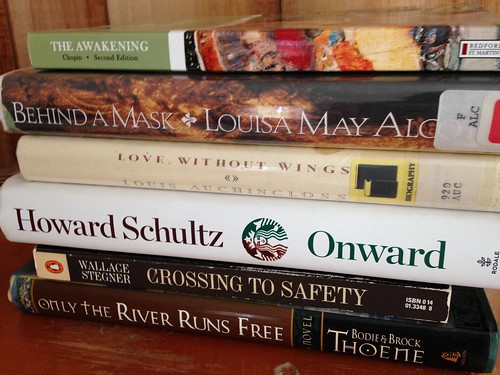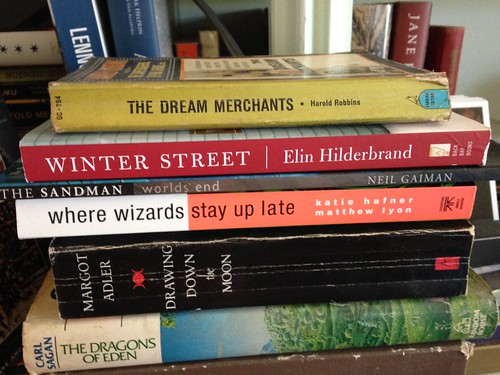 The Library Book, by Susan Orlean, is, superficially, the fascinating story of the 1986 fire that essentially destroyed Central Library in Los Angeles. Orlean discusses the fire itself and the damage it caused to collections, first from smoke and flame, and then from water hoses. Paid staff and volunteers made heroic efforts to save as many books, maps and other materials as they could both from the immediate fire and then later, as the wet books, which had been frozen, were brought back to life.
The Library Book, by Susan Orlean, is, superficially, the fascinating story of the 1986 fire that essentially destroyed Central Library in Los Angeles. Orlean discusses the fire itself and the damage it caused to collections, first from smoke and flame, and then from water hoses. Paid staff and volunteers made heroic efforts to save as many books, maps and other materials as they could both from the immediate fire and then later, as the wet books, which had been frozen, were brought back to life.
Orlean also pursues the mystery of who started the fire. A suspect was arrested but there simply wasn’t enough evidence to convict Harry Peake, a sometime actor whose story of that April day changed often and in startling ways but Peake admitted to setting the fire in at least one or two versions.
But, the heart of the book is the story of the libraries in general and the Los Angeles County Public Library, in particular. She traces the history of the Central Library up to the fire, through to the present day and then imagines a bit of the future. Overdrive might change the nature of libraries, making it easier to access digital resources, but the story of the library throughout its history was and is one of service that goes beyond caretaking and dispensing materials. Orlean visits various departments including those who answer the phone and answer questions that, as one of them points out, could often be easily answered using Google. Not everyone goes online and some people just want to talk with a human being.
The Los Angeles library system, along with many urban libraries, is on the front line of the homeless crisis. Beyond being a shelter during the day, the library connects homeless people to information and resources in both informal and formal ways as Orleans describes a program in which the librarians invited service providers to an organized fair where homeless patrons could be directed to the services they needed. Librarians carry a strong sense of social justice, deeply embedded concern for the “whole” person.
Orlean begins each chapter with four book titles related to the coming text, including their Dewey Decimal number. And, throughout, her own love of books and libraries shine through. We sense a fellow traveler who wrote this book out of love and gratitude. The most touching parts of the book, I think, are the interviews with those who were at the library the day of the fire, whether librarians, patrons or firemen, and those who lived through the years of restoration of both the building and the books.
Note: I received this book free from NetGalley in exchange for an honest review.









